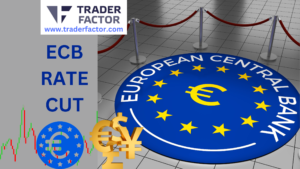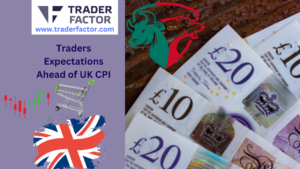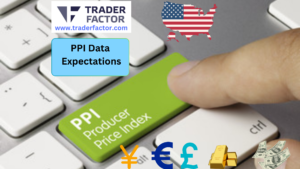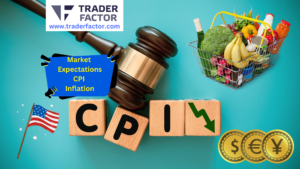Briefs
- Inflation increased 0.4% in September
- Worker wages fall 0.1% monthly and 3% year over year
- Markets now expect the Fed rate hikes in November and December.
- Positive earnings release from J P Morgan Chase & Co
After yet another hotter-than-expected inflation report solidified expectations for further bumper interest rate increases from the Federal Reserve, with uncertain effects for the economy, markets swung wildly on Thursday.
In September, consumer prices for a wide range of goods and services increased more than anticipated as inflationary pressures continued to drag on the American economy.
According to the Bureau of Labor Statistics, the consumer price index rose 0.4% for the month, which was higher than the 0.3% Dow Jones estimate. So-called headline inflation was up 8.2% over the past year, down from its peak of around 9% in June but still close to the highest levels seen since the early 1980s.
When volatile prices for food and energy were excluded, the core CPI increased even more for the month, accelerating by 0.6% as opposed to the 0.4% increase predicted by Dow Jones. The largest 12-month gain since August 1982, core inflation increased 6.6% from a year ago.

Source: U.S. Bureau of Labor Statistics
When volatile prices for food and energy were excluded, the core CPI increased even more for the month, accelerating by 0.6% as opposed to the 0.4% increase predicted by Dow Jones. The largest 12-month gain since August 1982, core inflation increased 6.6% from a year ago.
The Labor Department announced Thursday that the number of unemployment claims for the week ending October 8 totalled 228,000, an increase of 9,000 from the previous week. Even though it was only a little bit above the 225,000 estimates, it still showed that there were not many layoffs.
The report has also gained more importance as investors grow more concerned about the effects of rising interest rates on the stability of the global financial system in the wake of this week’s additional turmoil in the markets for British government bonds.
Before bouncing back to trade up nearly 2 percent by the afternoon, an unusually widespread for a single day, the S&P 500 initially fell sharply lower, dropping by more than 2 percent and setting a new low for the year.
However, these wild swings in prices have become more frequent this year as U.S. economic data and technical factors have clashed in markets where investors bet on when stock prices have reached a bottom and will rise again.
The S&P 500 saw its sixth consecutive day of declines on Wednesday before rallying on Thursday. The index last suffered losses for seven days in a row at the beginning of the coronavirus pandemic at the end of February 2020.
The MOVE index, which gauges volatility in the Treasury market, as well as the CBOE Vix index, which tracks stock market volatility and is referred to as Wall Street’s “fear gauge,” both continue to be high.
Investors are growing concerned that the Fed’s campaign of significant rate increases may bring about a financial accident similar to the recent shock waves in British markets. The higher-than-expected inflation reading, according to some investors, increased this risk.
Expect More Fed Hikes?
The prediction is for a three-quarter-point increase based on prices in futures markets, which demonstrates where investors anticipate interest rates to be following the Fed’s upcoming meeting. That would be the fourth increase of that size this year, which was once uncommon.
Investors adjusted their expectations for how high interest rates could go next year, with a peak of about 4.86 percent in May, above the Fed’s own projections, and increased their bets on the Fed raising rates by three-quarters of a point again in December.
Mr. Ripley declared, “This is a new regime with higher rates. We will witness some interesting market developments the longer they remain elevated.
A senior investment strategist said, “There are many people out there looking for peak inflation and a slowdown from the Fed on rate hikes, but the data are not in their favor.” The Fed will be under pressure to act more as a result of this.
Cracks are starting to show up all over the place, which is making investors’ worries worse. Government intervention has limited the daily trading of Japanese government debt. The highest mortgage rates since the year 2000 are currently being experienced. Corporate loans and bonds have lost value.
Investors now have the opportunity to see how rising rates are affecting the state of the economy as businesses start to report their financial results for the third quarter.
Friday Earnings Release
Despite the shockwaves in the stock markets, investors were treated to some good news from the earnings podiums of UnitedHealth and JP Morgan. Here is what the Friday morning investor briefing looked like.
UnitedHealth Group Incorporated
Premarket trading for UnitedHealth Group is up Friday after the company raised its FY22 outlook and reported Q3 results that beat expectations. With double-digit growth at both Optum and UnitedHealthcare, Q3 total revenues increased by 11.83% year over year to $80.89B.
Adjusted EPS rose +28.1% year over year to $5.79. To $5.55, EPS increased by 29.67%. Due to COVID effects and business mix, the company claimed that the medical care ratio was 81.6% in Q3 as opposed to 83.0% in Q3 2021.
J P Morgan Chase & Co
The largest U.S. bank by assets on Friday reported results that exceeded analysts’ expectations as it took advantage of rising rates to increase interest income. The bank posted earnings of $3.12 a share, beating the $2.88 estimate of analysts and revenue of $33.49 billion, exceeding the $32.1 billion estimate.
Morgan Stanley
However, it wasn’t all good news as the New York-based bank reported that profit fell 29% from the prior year to $2.63 billion, or $1.47 per share. Investment banking and revenue declines in investment management were the primary causes of the revenue decline, which resulted in a $12.99 billion drop in revenue from the previous year.
Disclaimer:
All information has been prepared by TraderFactor or partners. The information does not contain a record of TraderFactor or partner’s prices or an offer of or solicitation for a transaction in any financial instrument. No representation or warranty is given as to the accuracy or completeness of this information. Any material provided does not have regard to the specific investment objective and financial situation of any person who may read it. Past performance is not a reliable indicator of future performance.
Author
-

Phyllis Wangui is a Financial News Editor with extensive knowledge of the forex, stock news, stock market, forex analysis, cryptos and foreign exchange industries. Phyllis is an avid commentator on these topics and loves to share her insights with others through financial publications and social media platforms.
View all posts SEO Editor




















